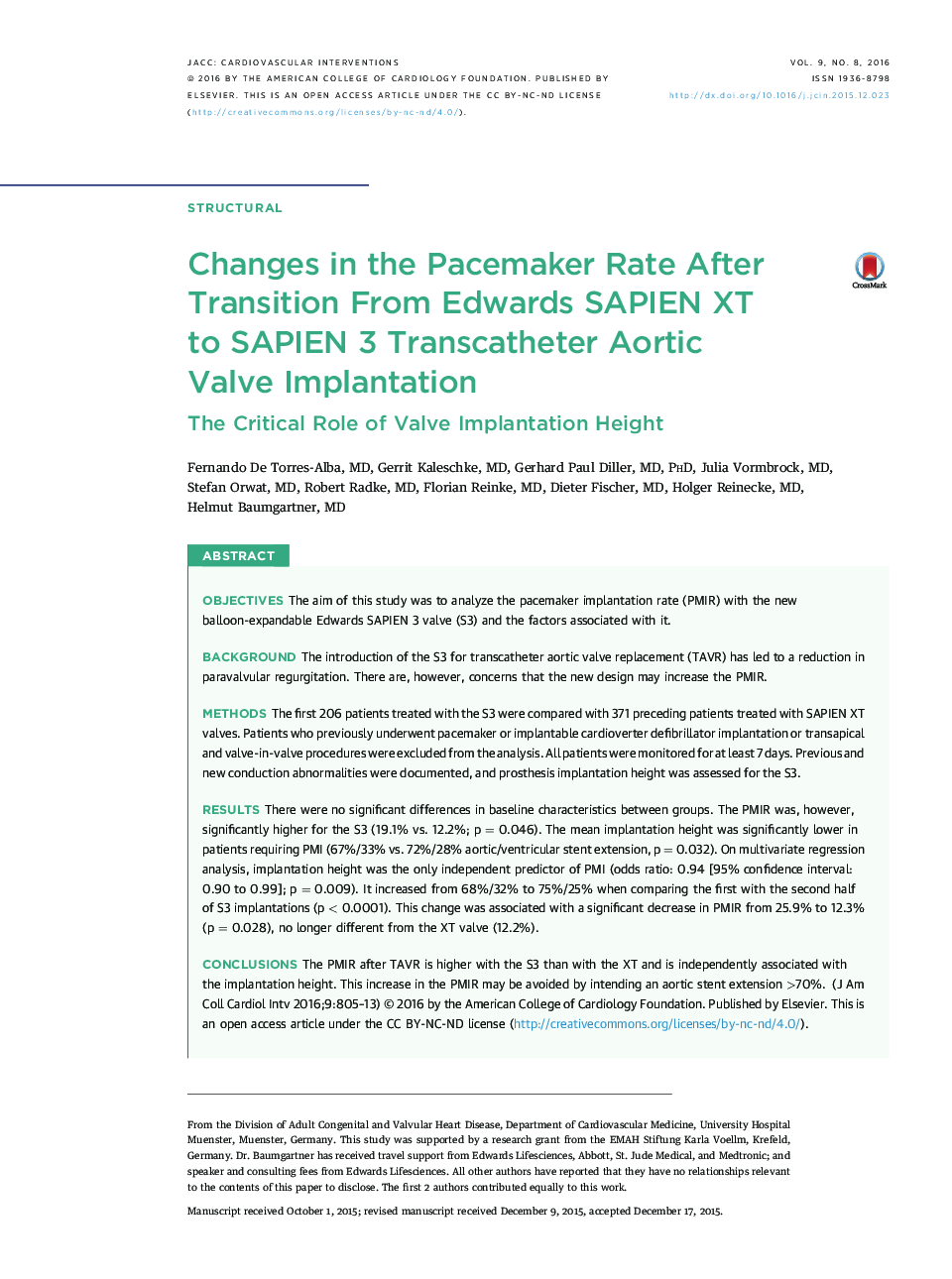| کد مقاله | کد نشریه | سال انتشار | مقاله انگلیسی | نسخه تمام متن |
|---|---|---|---|---|
| 5980468 | 1176996 | 2016 | 9 صفحه PDF | دانلود رایگان |

ObjectivesThe aim of this study was to analyze the pacemaker implantation rate (PMIR) with the new balloon-expandable Edwards SAPIEN 3 valve (S3) and the factors associated with it.BackgroundThe introduction of the S3 for transcatheter aortic valve replacement (TAVR) has led to a reduction in paravalvular regurgitation. There are, however, concerns that the new design may increase the PMIR.MethodsThe first 206 patients treated with the S3 were compared with 371 preceding patients treated with SAPIEN XT valves. Patients who previously underwent pacemaker or implantable cardioverter defibrillator implantation or transapical and valve-in-valve procedures were excluded from the analysis. All patients were monitored for at least 7 days. Previous and new conduction abnormalities were documented, and prosthesis implantation height was assessed for the S3.ResultsThere were no significant differences in baseline characteristics between groups. The PMIR was, however, significantly higher for the S3 (19.1% vs. 12.2%; p = 0.046). The mean implantation height was significantly lower in patients requiring PMI (67%/33% vs. 72%/28% aortic/ventricular stent extension, p = 0.032). On multivariate regression analysis, implantation height was the only independent predictor of PMI (odds ratio: 0.94 [95% confidence interval: 0.90 to 0.99]; p = 0.009). It increased from 68%/32% to 75%/25% when comparing the first with the second half of S3 implantations (p < 0.0001). This change was associated with a significant decrease in PMIR from 25.9% to 12.3% (p = 0.028), no longer different from the XT valve (12.2%).ConclusionsThe PMIR after TAVR is higher with the S3 than with the XT and is independently associated with the implantation height. This increase in the PMIR may be avoided by intending an aortic stent extension >70%.
Journal: JACC: Cardiovascular Interventions - Volume 9, Issue 8, 25 April 2016, Pages 805-813